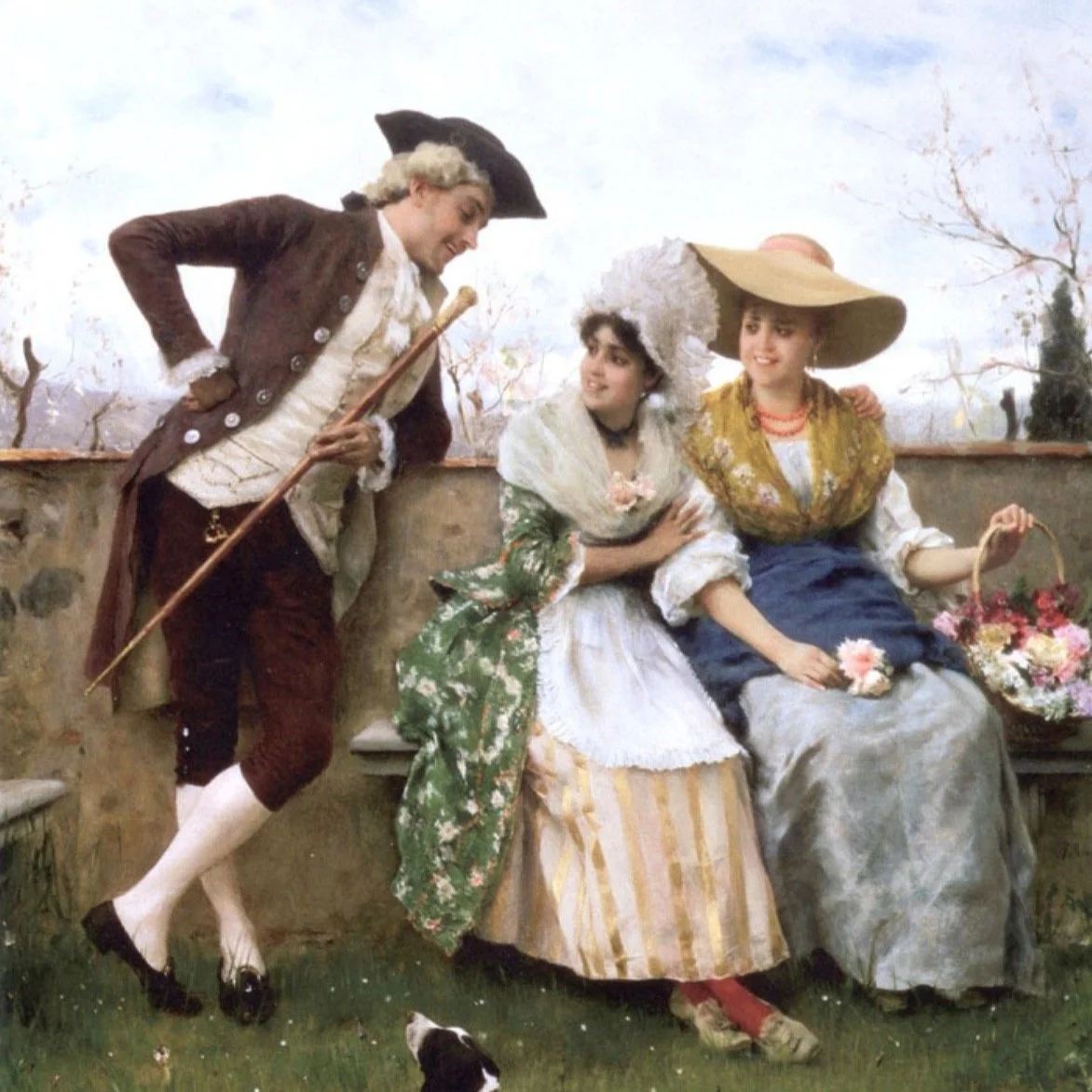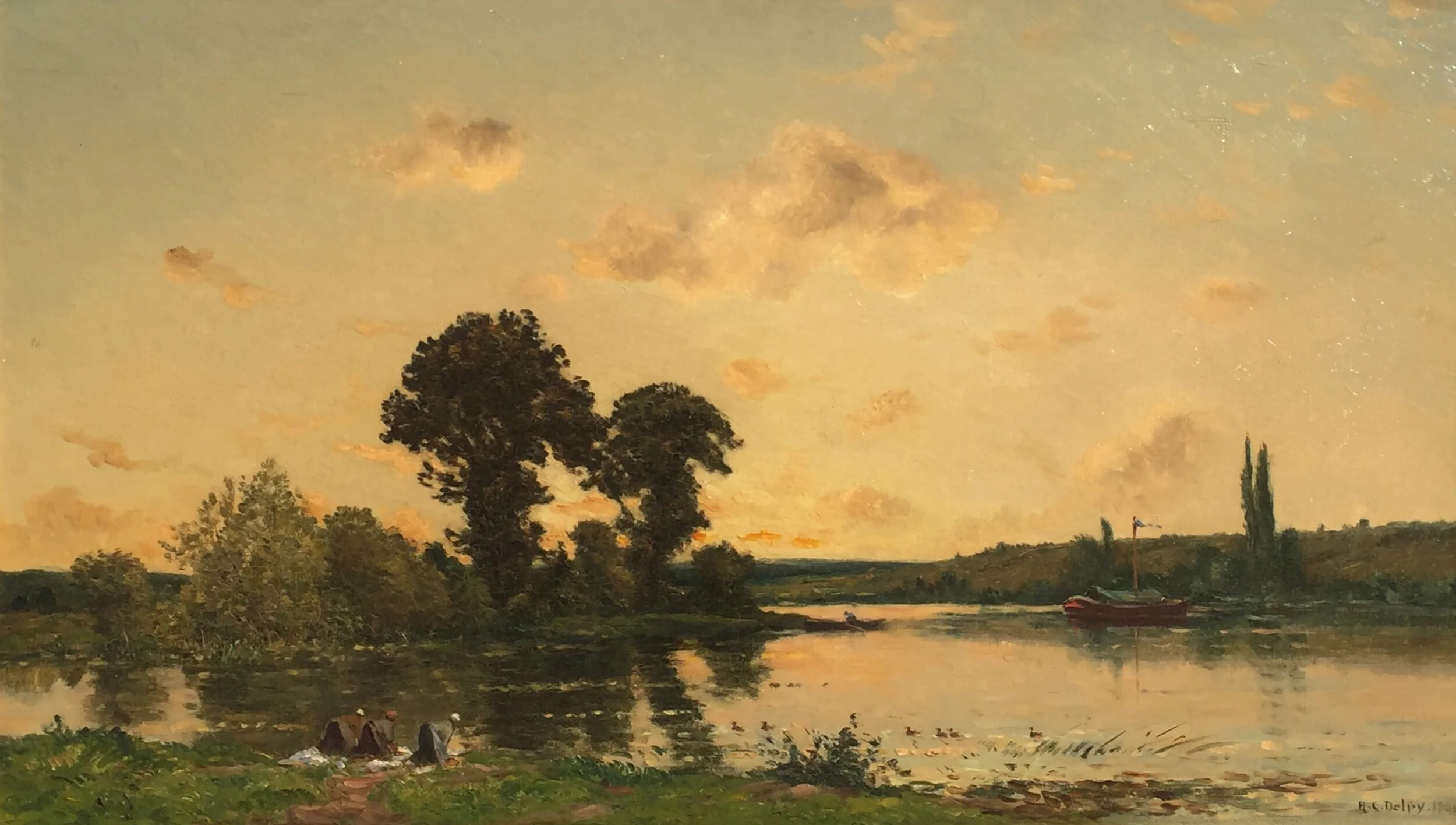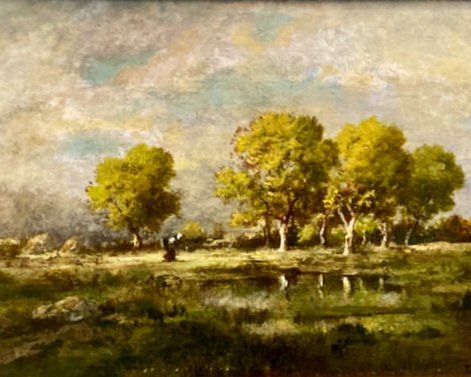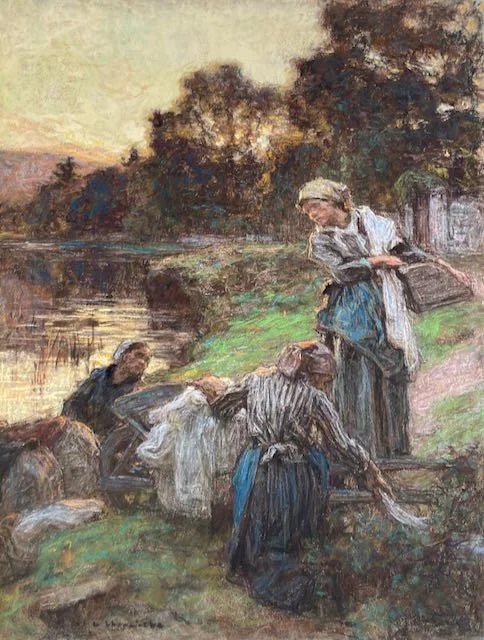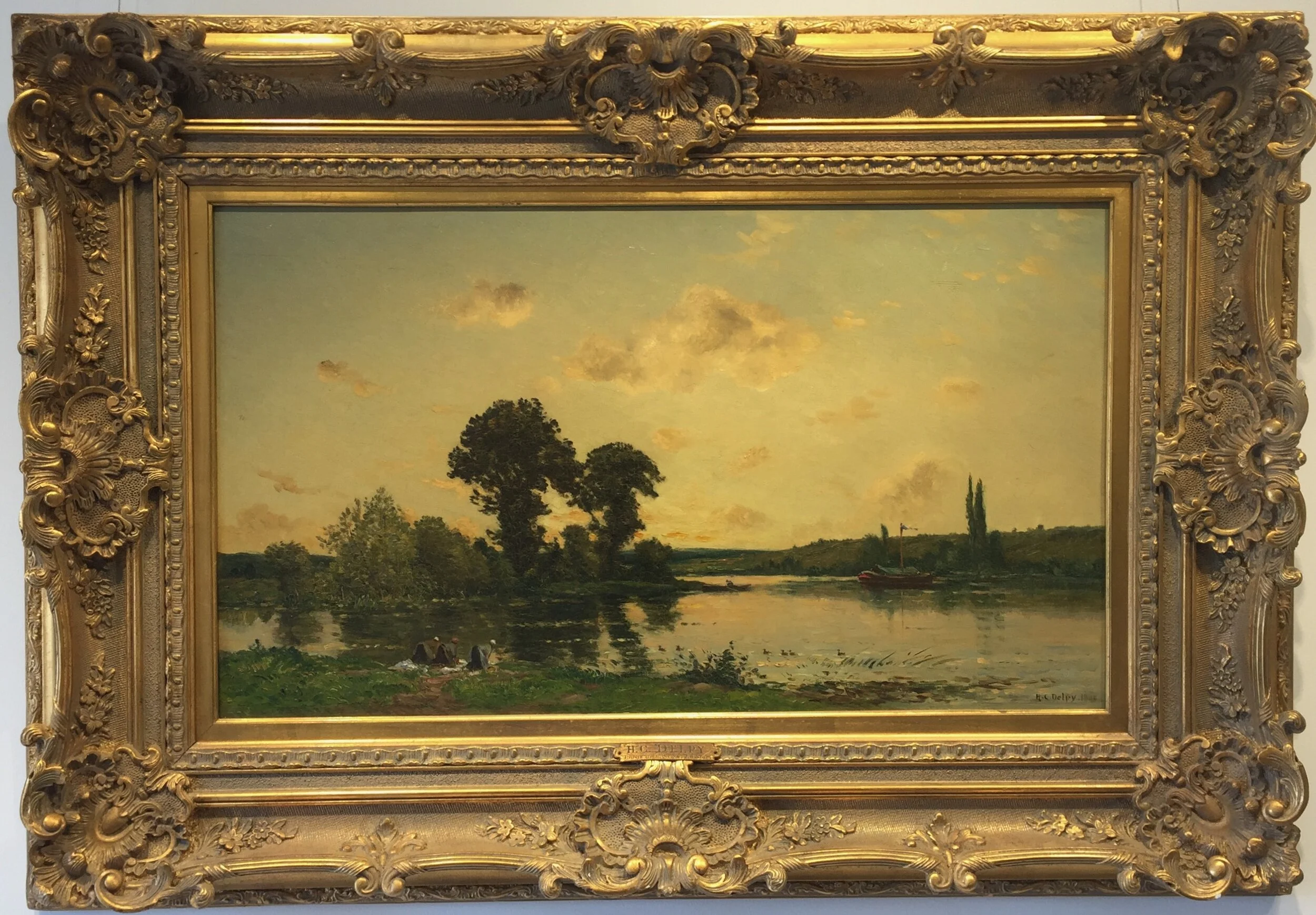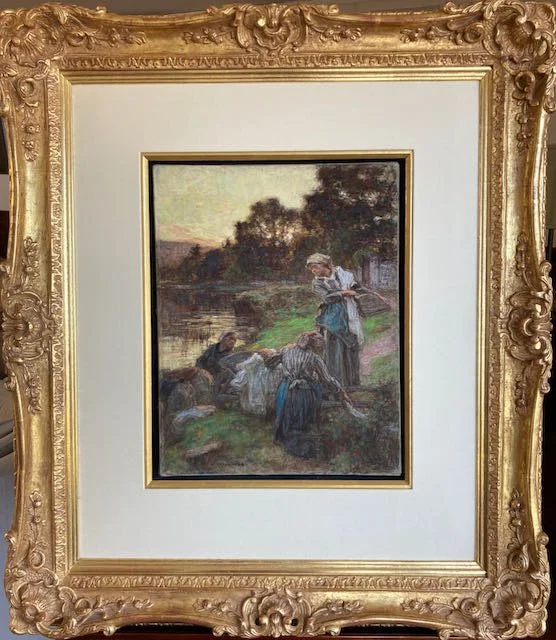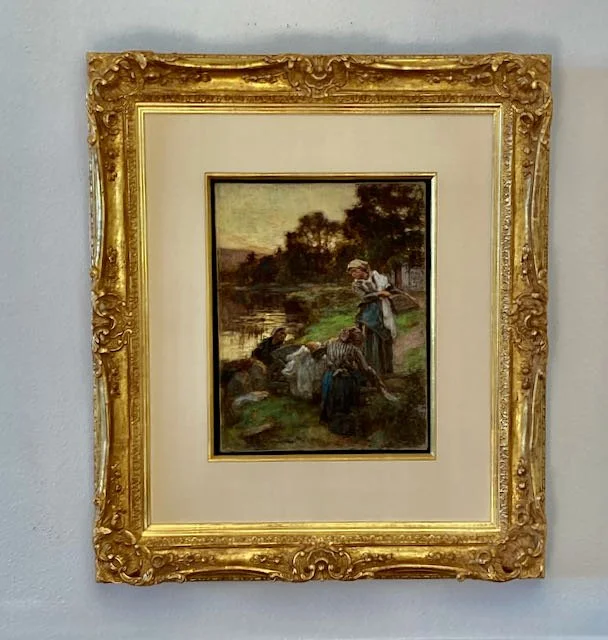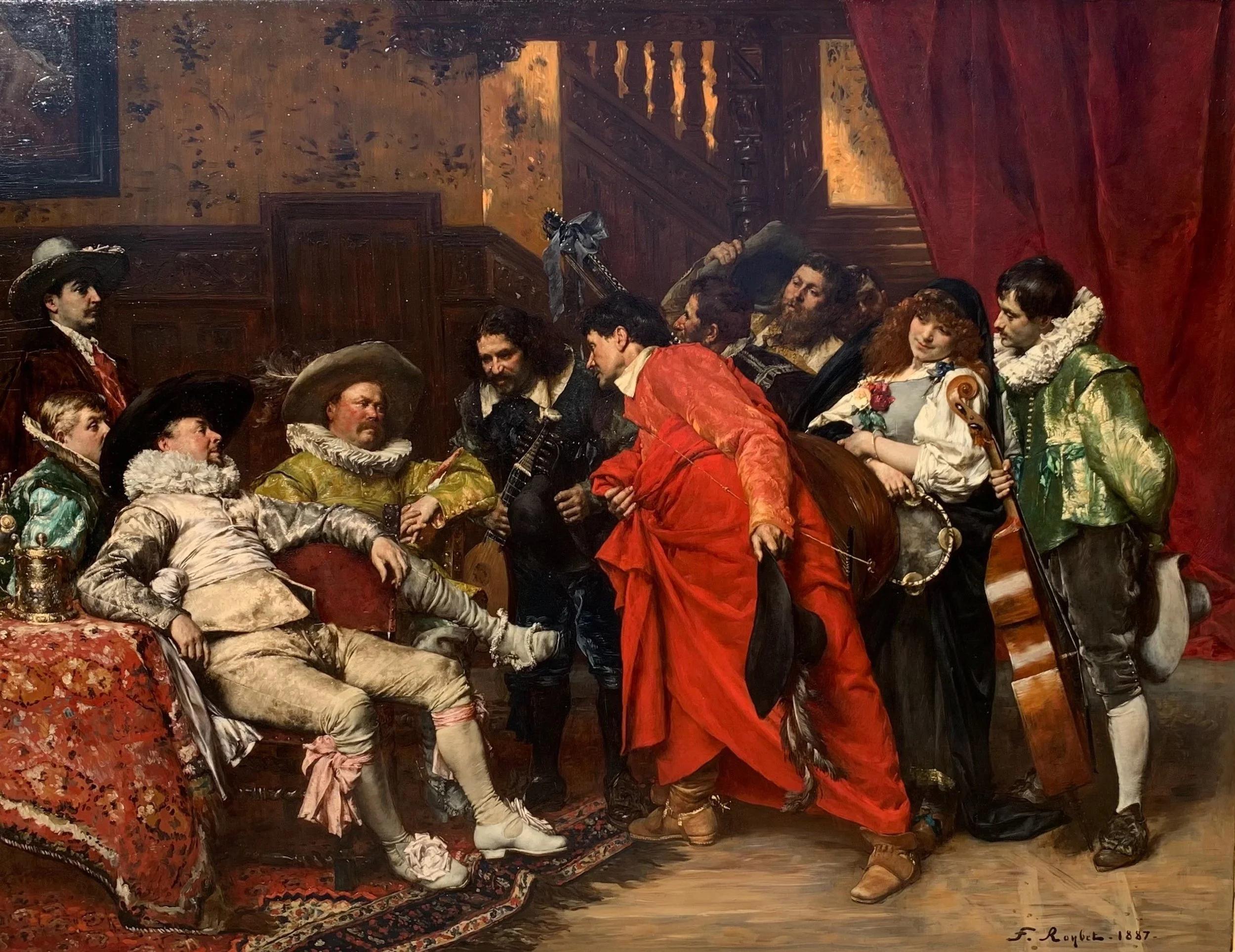(French, 1848-1884)
Vieillard dans un paysage lisant un livre, 1881
(Old Man Reading a Book in a Landscape)
Oil on canvas
17 ¾ inches x 16 ¼ inches (45 x 42 cm)
Signed and dated lower left: J. Bastien Lepage 81
Framed: 24 x 22 ½ inches
Provenance:
John H. McKay, New York, Parke Bernet Gallery, March 12th, 1969, Old Master, Barbizon & Other Nineteenth Century Paintings, lot 156. Raydon Gallery, New York City, 1969 , Mr. Gerald Davey, New Jersey, Private Collection, California by descent, Anderson Galleries, Beverly Hills.
Literature:
Marie-Madeleine Aubrun, Jules Bastien-Lepage, catalogue raisonné de l'Oeuvre, 1985, p. 215, no. 331 as Vieillard dans un paysage lisant un livre (location unknown).
Biography:
At the time of his death at the young age of 36 in 1884, Bastien-Lepage was avidly collected in Europe and America, and exerted tremendous influence on an international group of followers from France, Germany, England, America and beyond, who took up his Naturalist* approach to painting and made it one of the dominant movements at the Paris Salons* of the 1880s and 1890s.
Deeply connected to his roots in the rural countryside of France, this intimate portrait of an elderly man lost in thought is undoubtedly a local resident from his home village of Damvillers. It is a striking example of the artist's direct and honest approach to his subject, his interest in natural light, and the modern painting techniques adopted from the Impressionists. In a departure from traditional methods of painting, Bastien-Lepage employed plein-air painting, photography, and the use of outdoor, glass studios to achieve a heightened sense of reality, of psychology, and of light and atmosphere in his paintings.
From the mid-1870s, Bastien-Lepage focused his subjects on life in his native Damvillers in the Meuse region of north-eastern France. In works such as Les Foins (1880, Musée d'Orsay), Saison d'octobre, récolte des pommes de terre (1879, National Gallery of Victoria, Melbourne), Pas mèche (1882, National Gallery of Scotland), and L'Amour au village (1883, Pushkin Museum, Moscow), the distinct landscape of the Meuse plays a significant role in the regionalist character of Bastien-Lepage's work. The rolling hills, broad patches of open fields, and red-roofed structures appear in numerous works, giving his peasant subjects a distinct and identifiable setting.
In addition to making the specificity of locale a running theme in his work, Bastien-Lepage's working methods, which explored the visual qualities of light and atmosphere, further heightened the reality and modernity of his paintings. In the present work, the gardens in the foreground depicted in broad slashes of varying greens and earth tones. Changes in the play of light and shadow on the various crops, or on dry earth or open grass are depicted, while the precise visual interpretation of the landscape plays a secondary role. Atmosphere also gains a significance, as it blurs the range of color and strong light in the distant hills and village. This focus on the visual qualities and effects of light reveals a modern approach to painting that should not be underestimated.
Museum Collections include: Musee du Louvre, Paris , Musee D’Orsay, Paris , Musee Rodin, Paris, Metropolitan Museum of Art, New York, National Gallery of Art, Washington, DC ,National Portrait Gallery, London, The National Gallery of Ireland, Dublin.
